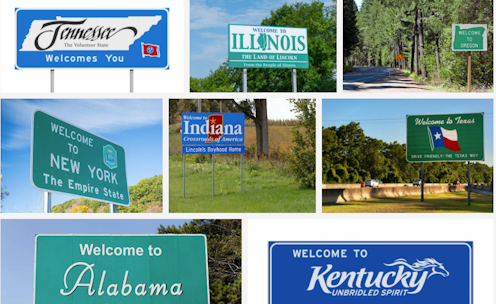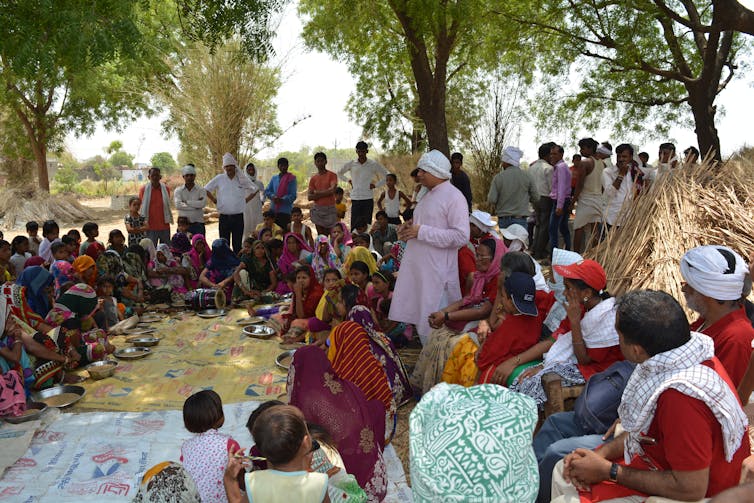How many states and provinces are in the world?
The U.S. is broken up into 50 states, plus territories like Puerto Rico and Guam, and a federal district, Washington, D.C. Most other countries have smaller parts too.


Curious Kids is a series for children of all ages. If you have a question you’d like an expert to answer, send it to curiouskidsus@theconversation.com.
How many states, or provinces or other divisions, are there in the world? – Noé, 8, Minneapolis
The exact answer is hard to come by – for now. Your question has actually sparked scholars to start talking about compiling an official, authoritative database.
Right now the best estimates land somewhere between 3,600 and 5,200, across the world’s roughly 200 nations. It depends on whether you collect data from specific nations’ own information, the CIA World Factbook or the International Standards Organization.
There are 195 national governments recognized by the United Nations, but there are as many as nine other places with nationlike governments, including Taiwan and Kosovo, though they are not recognized by the U.N.
Most of these countries are divided into smaller sections, the way the U.S. is broken up into 50 states along with territories, like Puerto Rico and Guam, and a federal district, Washington, D.C.
They are not all called “states,” though: Switzerland has cantons, Bangladesh has divisions, Cameroon has regions, Germany has lander, Jordan has governorates, Montserrat has parishes, Zambia has provinces, and Japan has prefectures – among many other names.
Most countries have some type of major subdivision – even tiny Andorra, tucked in the Pyrenees Mountains between France and Spain, has seven parishes. Slovenia has the most, with 212: 201 municipalities, called “obcine” in Slovenian, and 11 urban municipalities, called “mestne obcine.”
Singapore, Monaco and Vatican City, all small city-states, are the three nations that have what are called “unitary” governments that are not divided into smaller sections.
Dividing governing power between national and subnational levels is called “federalism.” It lets countries organize large areas of land and large numbers of people, handling different interests of diverse groups, often with different languages, religions and ethnic identities.
National governments still control international relations, military power and money and banking systems – things that affect everyone in a country equally. But states, provinces, cantons and the like let more local government groups have some amount of say over health care, education, policing and other issues where needs can vary substantially from one area to another.
Variations in laws and regulations benefit people in a couple of different ways. First, people can leave one area and move to another that has laws or policies that are more to their liking. In addition, different regions can try different approaches to solving particular problems – like educating all children or providing health care in rural areas, perhaps identifying which methods are more effective.
Federal systems also make it easier for citizens to join government by running for office, including challenging the current officeholders. It is much cheaper and less complicated to seek support from voters in a smaller area. Smaller government agencies can also make better use of local knowledge about geography or historical traditions to govern people in ways that fit their needs.

There are some drawbacks, too: Some regions may have laws and rules that expand business opportunities or protect the environment – while other regions may have fewer business regulations or more damaged landscapes. Problems like that can mean people who live near one another – but in different states – have unequal qualities of life.
And sometimes provincial governments can slow the progress of major national initiatives meant to benefit everyone.
But most countries seem to have decided that the positives outweigh the negatives. And in fact, they’ve gone even deeper into federalism. Beyond states and provinces, there are many even smaller units of government.
In the U.S., states are made up of counties, which are in turn made up of towns, cities or other municipal governments. There are many more thousands of these – the Database of Global Administrative Areas tallies 386,735. Brazil alone has 5,570 municipalities. India has 250,671 village councils, called “gram panchayats.” But even those are divided into smaller districts called “wards,” each of which votes for its own council member.
If you want some more fun, try looking for the flags of each of these subnational governments!
Hello, curious kids! Do you have a question you’d like an expert to answer? Ask an adult to send your question to CuriousKidsUS@theconversation.com. Please tell us your name, age and the city where you live.
And since curiosity has no age limit – adults, let us know what you’re wondering, too. We won’t be able to answer every question, but we will do our best.
Vasabjit Banerjee does not work for, consult, own shares in or receive funding from any company or organization that would benefit from this article, and has disclosed no relevant affiliations beyond their academic appointment.
Read These Next
2 superpowers, 1 playbook: Why Chinese and US bureaucrats think and act alike
The men and women tasked with implementing policy are governed by the same incentives and constraints…
How rogue nations are capitalizing on gaps in crypto regulation to finance weapons programs
North Korea was behind a $1.5 billion digital bank heist in February 2025. Other countries are similarly…
Epstein’s victims deserve more attention than his ‘client list’
Powerful men connected to Jeffrey Epstein are named, dissected and speculated about. The survivors,…





